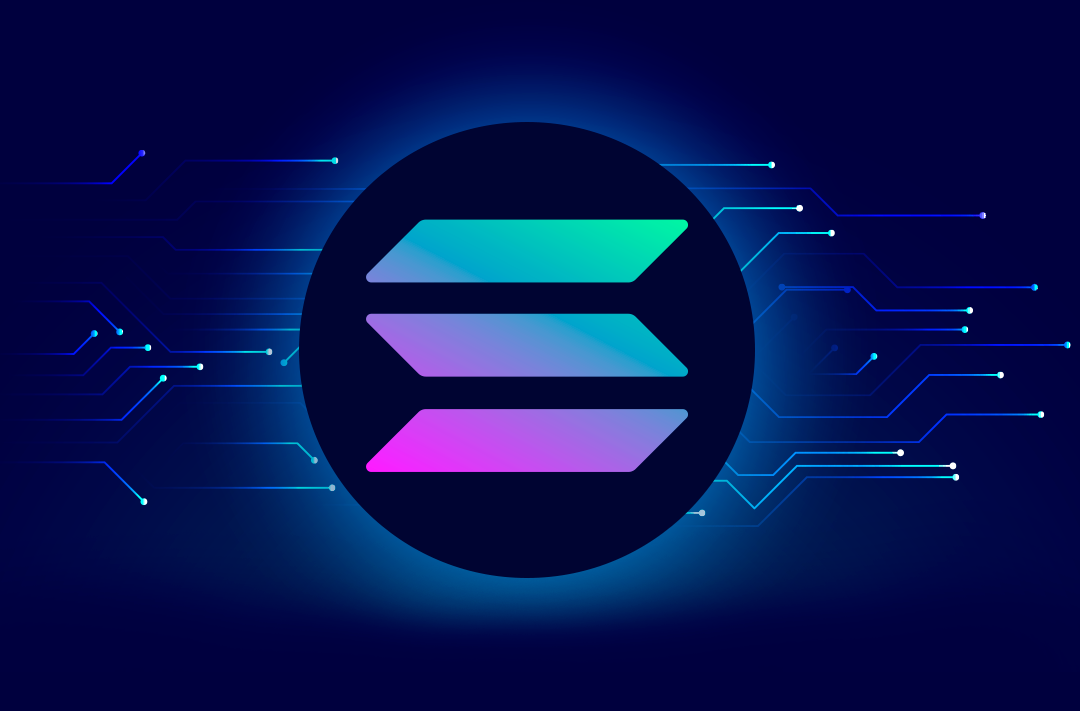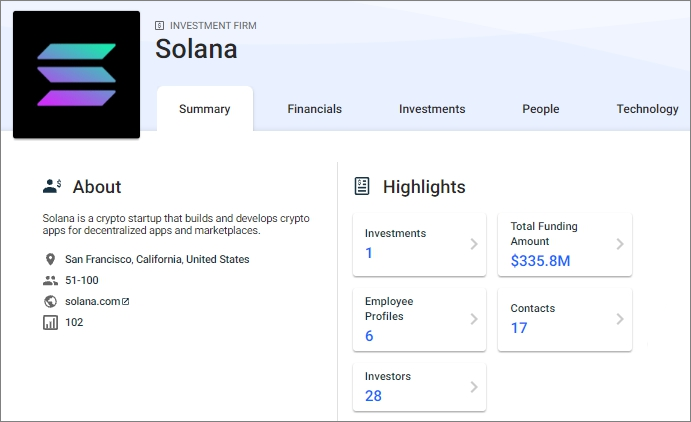What is Solana
Solana is the first Web-scale blockchain capable of supporting the future growth of decentralized applications, exchanges, and platforms

03.10.2021
19971
6 min
81
The team has already proposed a number of breakthrough solutions aimed at security, increasing throughput, and decentralization:
- a decentralized clock that functions inside the blockchain and allows all nodes to synchronize with each other;
- streaming transactions without waiting for global consensus;
- exchange of data between nodes according to the BitTorrent principle - blocks are divided into smaller packets that are loaded in parallel via UDP protocol;
- deleting a mempool.
In this article, we will analyze the purpose of Solana and its features in detail.
History of Solana
The development team. The Solana project was launched by former Qualcomm and Dropbox developer Anatoly Yakovenko, as well as Greg Fitzgerald, Stephen Akridge, and Raj Gokal. Today the team has expanded to 20 specialists.
In 2017, the founder of the Solana project published a paper in which he described a solution to the scalability problem of decentralized networks using the Proof-of-History algorithm. In 2018, he launched the first version of a test network.
Proof-of-History is a “history proof algorithm.” It eliminates the problem of scalability while maintaining a high level of security and decentralization.
The blockchain was named after the town of Solana Beach, near San Diego. The original name of Loom was changed to Solana to avoid confusion with the L2 solution for Ethereum.

Project development. Solana has a large community - over 100 thousand people in its Telegram channel, and more than 250 projects have been launched on its blockchain.
In June 2020, the Solana Foundation was created as a continuation of the ecosystem's development. The organization received 167 million SOL coins from Solana Labs for research, outreach, and educational activities.
In August 2020, the decentralized Serum exchange started working on the Solana blockchain.
In October 2020, the project presented a Wormhole cross-chain solution connecting tokens of the Ethereum and Solana networks.
In 2021, the project raised $474 million for:
- the development of the application in China;
- funds focused on expanding the system in Ukraine, India, Brazil, and Russia;
- creating a venture division to invest in its ecosystem;
- launching a Solana-based project development studio.
Features of the Solana cryptocurrency
According to Solana Foundation representatives, the current throughput of the blockchain is 60 thousand transactions per second, and in the future, it may reach 710 thousand transactions per second. By comparison, VISA supports only 65 thousand operations per second.
Eight main functions
Solana's task is to make the decentralized node network correspond to the specified characteristics of a single node. Solana solves the problem of node synchronization using eight key technologies.
Proof-of-History. This is a mechanism to optimize the time spent on transaction confirmation by synchronizing the blockchain. It has an internal clock that shows the time on all nodes in the network. The mechanism adds timestamps to the blocks, which allows you to determine exactly when a particular event occurred.
Tower BFT. This is a PoH-optimized version of PBFT (Practical Byzantine Fault Tolerance). It ensures that all participants act in the best interest of the network's well-being. Thanks to PoH, PBFT timeouts are encoded in the registry itself. Each subsequent vote doubles the amount of time the network will have to stop before it can roll back that particular vote.
Turbine. It solves the problem of increasing the time of data distribution over a large number of peer nodes. It works similarly to BitTorrent - each block is divided into packets of up to 64 KB, and data transfer is performed via UDP protocol. Thus, data downloads are made simultaneously from multiple peers.
Gulf Stream. The protocol for transferring transactions without using a mempool allows you to forward transactions to the expected leader in advance, which reduces the time for confirmation and leader change.
Sealevel. Parallel processing of smart contracts thanks to the operating system driver, which implements the scatter-gather mechanism. Transactions tell you in advance which state they will read and write at runtime. Sealevel finds non-overlapping transactions in a block and schedules their execution.
Pipelining Pipeline optimization method: data collection and recording is performed at the operating system kernel level, verification is done at the GPU level, and banking is performed at the processor level.
Cloudbreak. When scaling a blockchain without segmentation, it is not enough to scale only computation. RAM is scaled by using mapped-to-memory files, and distributing read/write operations to SSDs across 32 parallel threads.
Archivers. Solana's power allows it to produce 4 petabytes of data annually. The data is divided into multiple chunks and interference-resistant codes. Storage is handled by archivers, nodes that are not involved in the consensus process.
The SOL token
Solana has its own cryptocurrency SOL, which functions as a utility token.
Utility tokens are digital assets issued for the purpose of funding the issuer's network. SOL uses the SPL protocol, a Solana blockchain token standard similar to ERC20 in Ethereum.
The SOL token is used for:
- payment of transactions when using the network or smart contracts;
- management;
- staking.
Total supply
The developers have laid down a mechanism for generating new coins based on a pre-built inflation schedule. The possibility of burning SOL tokens is also assumed. Currently, 299 million SOLs are in circulation.

Solana emission graph
The Solana Wallet
The Solana project supports several types of wallets both in its application and from third-party developers, which are used only for storage. An up-to-date list of wallets, exchanges and other services can be found in the official Solana community.
Solana's appeal to developers
Solana's blockchain enables the development of applications within the platform and uses the popular Rust programming language. Solana's stability and speed can contribute to the arrival of banking applications in the ecosystem.
In the near future, it is planned to launch a new service called Star Atlas - a new-generation gaming metaverse where players from all over the world can create, play and learn. Along with it, the implementation of NFT technology will appear in the ecosystem.
Popularity among users
SOL cryptocurrency attracts users with high speed and low transaction costs. Another advantage for users will be the token whitelisting system in the Solstarter app.
Solstarter is the first decentralized platform for fundraising and initial DEX offering (IDO) on the Solana blockchain. Solstarter's mission is to make DeFi accessible and fair for everyone.

Rating of cryptocurrencies, October 2021
Solana is a fairly young and promising third-generation blockchain project with improved speed and scalability. The project ranks seventh in terms of capitalization in the Coinmarketcap rating and attracts the attention of large investors such as Multicoin Capital and Foundation Capital.
Useful material?
Basics
Why Satoshi Nakamoto’s technical manifesto for a decentralized money system matters
Oct 31, 2022
Basics
Experts evaluated the development prospects of the new ecosystem and the investment attractiveness of its token
Oct 20, 2022
Basics
How to track fluctuations correctly and create an effective income strategy
Sep 13, 2022
Basics
Review of the most profitable offers from proven trading platforms
Aug 29, 2022
Basics
The Ethereum Foundation team has published a breakdown of major misconceptions about the upcoming network upgrade
Aug 18, 2022
Basics
What benefits the exchange offers, and what else is in the near future
Aug 4, 2022









 Telegram
Telegram  Twitter
Twitter